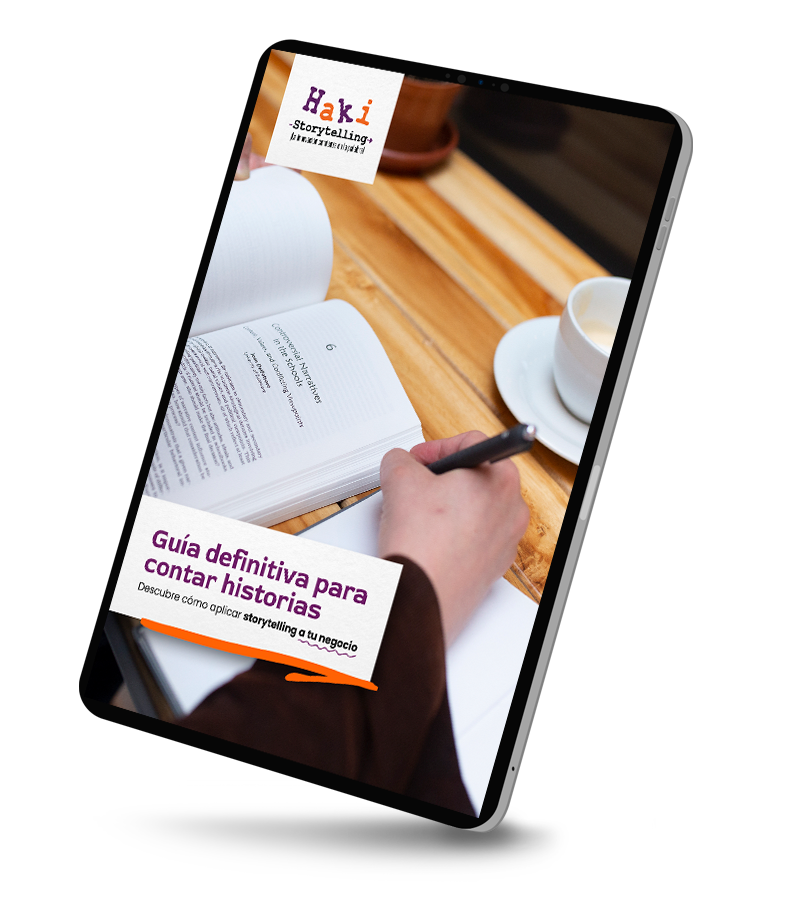Hoy en día se habla mucho sobre Storytelling, pero a pesar de toda la información que podemos encontrar, muchas veces nuestro interés se desvanece en el crucial momento de contar historias, nos preguntamos “¿Qué es lo que voy a narrar?” Y al creer que no tenemos historias para contar nos damos por vencidos.
Hace un par de semanas asistí a un webinar del Story Powered Institute con Paul Andrew Smith, autor del libro Lead with a Story. Luego del show lo contacté, y le propuse ser escritor invitado para el blog de Haki.
Después de graduarse de la universidad, Smith decidió seguir una cómoda carrera corporativa y durante más de 20 años trabajo en empresas reconocidas como Arthur Andersen (ahora Accenture) y Procter & Gamble. Muchos de esos años los dedicó a estudiar y entender el liderazgo, la influencia y la comunicación.
En un momento de su vida decidió abandonar el camino que había tomado, y ahora se encuentra en una misión: “Hacer del mundo un mejor lugar, una historia a la vez”. Es conferencista, Story Coach y Business Storyteller. También es el autor de los libros: Liderar con una Historia: una guía para crear narrativas de negocios que cautiven, convenzan e inspiren, y de Criando con Historias: lecciones de la vida real para que padres e hijos compartan. Pueden conocer más acerca de él y su trabajo en su página web.
Smith me compartió el siguiente escrito, donde narra una historia bellísima de Sterling Price, un cocinero, hace 30 años, de un restaurante de pizza. Luego, sobre esta, realiza un pequeño análisis dentro del cual resalta tres formas para encontrar historias en una organización.
Cada compañía cuenta con ingredientes de historias poderosas llenas de significado acechando en algún lugar. Algo brillante, conmovedor, o ingenioso ocurre, que puede ayudar a inspirar al resto de la organización. El problema es que a menudo olvidamos esos momentos, antes de que alguien se le ocurra capturarlos y compartirlos, porque no parece que sean algo a lo que le debemos poner atención. Nadie conoce mejor eso que Sterling Price.
Hace 30 años Sterling era un cocinero en un restaurante de pizza en Springdale, Arkansas. De acuerdo a como él lo cuenta: “Una señora entró un día y preguntó si teníamos sánduches de albóndiga. Cuando le dije que no teníamos se puso muy brava—casi a punto de llorar; entonces le dije que a pesar de que no los teníamos en el menú, si teníamos pan para sándwich, albóndigas, salsa de tomate, y queso mozarella. Dado que teníamos todos los ingredientes, le dije que se lo podía preparar y cobrárselo como uno de los otros sánduches del menú.
Ella me lo agradeció profusamente, y luego me explicó que su marido estaba muy enfermo y que había perdido el apetito. Ella estaba desesperada en lograr que él comiera algo, y le había preguntado si había algo que él quisiera. Él le dijo que tal vez podría comer un poco de un Sándwich de albóndigas. Ella ya había estado en varios restaurantes, y en ninguno la habían podido ayudar. Nosotros éramos la última parada que ella iba a hacer antes de llegar a su casa con las manos vacías.
Ella se llevó el sándwich a casa y yo no pensé más sobre el incidente hasta el día siguiente cuando ella llamó a la tienda y preguntó por mí. Me contó que su marido había comido tanto del sándwich como había podido, y que estaba muy agradecido de que ella lo hubiera podido conseguir. Fue la comida más completa y agradable que él había tenido en días.
Luego me explico un poco más sobre la condición de su marido. Resulta que unos meses antes había sido diagnosticado con un cáncer en etapa cuatro. La pérdida de apetito era el menor de sus desagradables síntomas, pero tal vez era el único con el que le podía proporcionar algo de confort. Significó mucho para ella que yo hubiera sido flexible con nuestro menú.
Luego me contó que había fallecido tranquilamente durante la noche. Ese sándwich fue su última comida. En ese momento ella estaba llorando, pero nuevamente me agradeció y dijo que había ayudado a que su último día de vida fuera un poco más llevadero. Hasta el día de hoy todavía me conmueve, un gran recordatorio que incluso las hasta los actos más pequeños que tenemos con otras personas, pueden tener un gran impacto en sus vidas.”
La Lección
La razón por la cual encuentro la historia de Sterling tan impactante, es porque ocurrió hace tres décadas, pero hasta donde él sabe, la primera vez que esa historia fue escrita y compartida fuera de las 4 paredes de ese edificio, fue hace tres años cuando la publiqué en Lead with a Story.
Solo piensen en todas las maneras en las que se habría podido utilizar esa historia. Dentro de una compañía podría haber sido utilizada para enseñarle a los empleados qué es un servicio al cliente estelar. Afuera de una compañía, habría podido ser utilizada en una gran campaña de publicidad o una campaña de relaciones exteriores para construir la reputación de la compañía. Desafortunadamente nada de eso ocurrió con su historia.
¿Por qué? Porque nadie identificó nunca el valor en ella para escribirla. Después de todo, solo era una historia, no tenía datos, ni dólares y centavos. No era parte de una prueba de mercado o un caso de estudio. Sólo era una historia.
Creo que eso es lo que quiero que la gente aprenda. No hay tal cosa como ‘Es sólo una historia’. Las historias son la herramienta de negocios más poderosa que tenemos, y ocurren a nuestro alrededor. Muchos de nosotros nos cruzamos con historias como esta, las disfrutamos mientras la escuchamos, y luego nunca volvemos a pensar en ellas; entonces las piezas de sabiduría e influencia más poderosas de la compañía no son descubiertas. Acá les presentó tres pasos para encontrar las suyas:
- Busca historias que ocurran a tu alrededor – Las grandes historias como la de Sterling ocurren a cada rato. ¿Cómo encontrar historias de vida en tiempo real que merezcan la pena ser contadas? He aquí dos tests sencillos:
- ¿AAcabas de ver a alguien aprender una lección inesperada, o aprenderla de manera inesperada? Si es así, esa es tuprimera pista de que una gran historia podría estar en fabricación.
- ¿Te hizo sentir algo? Las experiencias que despiertan emociones Fuertes son usualmente una buena señal de que una gran historia está a punto de nacer. La historia de Sterling pasa ambos tests, que lástima que nadie se dio cuenta.
- Pregunta por ellas – Mientras caminas por la oficina, o tienes reuniones con una persona, pregunta: “¿Tienes alguna historia buena? Celebra un concurso sobre la mejor historia acerca de cualquier tema que satisfaga tus necesidades. Realiza sesiones de Storytelling. Lleva a cabo entrevistas formales sobre historias. Las grandes historias están ahí afuera, la mayoría de nosotros nunca ha preguntado por ellas.
- Investigue su pasado – Hazte preguntas como esta: ¿Cuál es el problema más difícil que he solucionado? ¿El mayor error? ¿Lo más creativo que he realizado hasta el momento? ¿Cuál ha sido la mejor relación de trabajo que he tenido? ¿Cuál es la lección más inesperada que he aprendido en el trabajo? Por último, recuerde tus éxitos, fracasos y pruebas más grandes. Seguramente, algunos podrán convertirse en grandes historias.
No permitas que las mejores historias de tu compañía pasen desapercibidas. Encuéntralas, cuéntalas y sácales el mayor beneficio.
Paul Andrew Smith
Conferencista, entrenador, autor, Business Storyteller and Story coach.
*****
Nowadays there’s too much talk about storytelling, but despite all the information that can be found, many times our interest fades in the crucial moment of telling stories, we wonder “What am I going to narrate?” And believing that we don’t have stories to tell, we give up.
A pair of weeks ago I attended a webinar the Story Powered Institute with Paul Smith, author of the book Lead with a Story. After the show I asked him if he would like to be a guest writer in the Haki Blog. Gladly, he accepted.
After graduating from College, Smith decided to follow a comfortable corporate career. He worked for more than 20 years in recognized companies such as Arthur Andersen (now Accenture) and Procter & Gamble. He devoted most of those years to study and comprehend leadership, influence and communication.
At a certain point in his life, he decided to abandon the path that he had taken, and now he’s on a mission: “To make the world a better place, one story at a time.”. He’s a speaker, Story Coach and Business Storyteller. He’s also the author of the books Lead with a Story: A Guide to Crafting Business Narratives That Captivate, Convince, and Inspire; and Parenting with a Story: Real-life Lessons in Character for Parents and Children to Share. You can learn more about him and his job in his website http://leadwithastory.com/
Smith shared with me the following piece, where he tells a beautiful story of Sterling Price, a cook, 30 years ago, of a pizza restaurant. Then makes a short analysis over the story, and highlights three ways to find stories in an organization.
3 STEPS TO FINDING YOUR ORGANIZATION’S BEST STORIES
Every company has the makings of powerful, insightful stories lurking somewhere. Something brilliant, touching, or ingenious happens that could help lead or inspire the rest of the organization. The problem is, too often that incredible moment is forgotten before it occurs to anyone to capture it and share it, because it doesn’t seem like the kind of thing we should be paying attention to. Nobody knows that better than Sterling Price.
Thirty years ago, Sterling was a cook at a pizza restaurant in Springdale, Arkansas. As Sterling tells it, “A lady came in one day and asked if we had meatball sandwiches. When I told her we didn’t, she got very upset—on the verge of tears. So I said that even though we didn’t have it on the menu, we did have sandwich rolls, meatballs, tomato sauce, and mozzarella cheese. Since we had all the ingredients, I told her I could make it for her and just ring it up as one of the other sandwiches on the menu.
“She thanked me profusely, and then explained that her husband was very sick and had lost his appetite. She was desperate to get him to eat something, and had asked him if there was anything that sounded good. He told her he might be able to eat some of a meatball sandwich. She’d been to several restaurants already and no one could help her. We were the last stop she was going to make before going home empty handed.
“She took the sandwich home and I didn’t think much more about it until the next day when she called the store and asked for me. She told me her husband had eaten as much of the sandwich as he could manage, and was very grateful she was able to get it for him. It was the most complete and enjoyable meal he’d had in days.
“Then she explained a bit more about her husband’s condition. It turns out he had been diagnosed with stage four cancer a few months earlier. His loss of appetite was the least of his unpleasant symptoms, but perhaps the only one she could provide any comfort for. So it meant a lot to her that I had been so flexible with our menu.
“Then she told me that he passed away quietly during the night. That sandwich was his last meal. She was crying by then, but thanked me again and said it helped make his last day of life a little more bearable. It still touches me to this day, and is a great reminder that even seemingly small things we do for others can have a big impact on their lives.”
The Lesson
Here’s why I find Sterling’s story so impactful. It’s because that happened three decades ago, but as far as he knows, the first time that story was ever written down and shared outside the four walls of that building, was three years ago when it was published in Lead with a Story.
Just think of all the ways that story could have been used. Inside the company it could have been used to teach other employees what stellar customer service looks like. Outside the company, it could have made a great advertising campaign or an external relations campaign to build the company’s reputation. Unfortunately, none of that ever happened with his story.
Why? Because nobody ever saw enough value in it to write it down. After all, it was just a story. There wasn’t any data in it. No dollars and cents. It wasn’t part of a test market or case study. It was just story.
I guess that’s what I want people to learn from this. There is no such thing as ‘just a story.’ Stories are the most powerful business tools we have. And they happen all around us. Too many of us come across stories like this, enjoy it while we hear it, and then never think of it again. So the most powerful pieces of wisdom and influence in the company often lay undiscovered. Here are three steps to finding yours.
- Look for stories happening around you – Great stories like Sterling’s happen all the time. How do you spot real-life, real-time stories worth telling? Here are two simple tests:
A. Did you just see someone learn an unexpected lesson, or learn it in an unexpected way? If so, that’s my first clue that a great story might be in the making.
B. Did it make you FEEL something? Experiences that spark strong emotions are usually a good sign that a great story is about to be born. Sterling’s story passes both these tests. Too bad nobody noticed.
- Ask for them – As you walk around the office, or meet with people one on one, ask: “Got any good stories?” Hold a contest for the best stories about whatever topic serves your needs. Hold storytelling sessions. Conduct formal interviews for stories. Great stories are out there. Most of us have just never asked for them.
- Probe your past – As yourself questions like these: What’s the toughest problem you ever solved? The biggest mistake you ever made? The most creative thing you’ve ever done? What’s the best working relationship you’ve ever had? What’s the most unexpected lesson you ever learned at work? Lastly, recall your greatest successes, challenges, and failures. Some are sure to make great stories.
Don’t let your greatest company stories sit undiscovered. Find them. Tell them. Benefit from them.
Paul Andrew Smith
Keynote speaker, trainer, author, Business Storyteller and Story coach.






